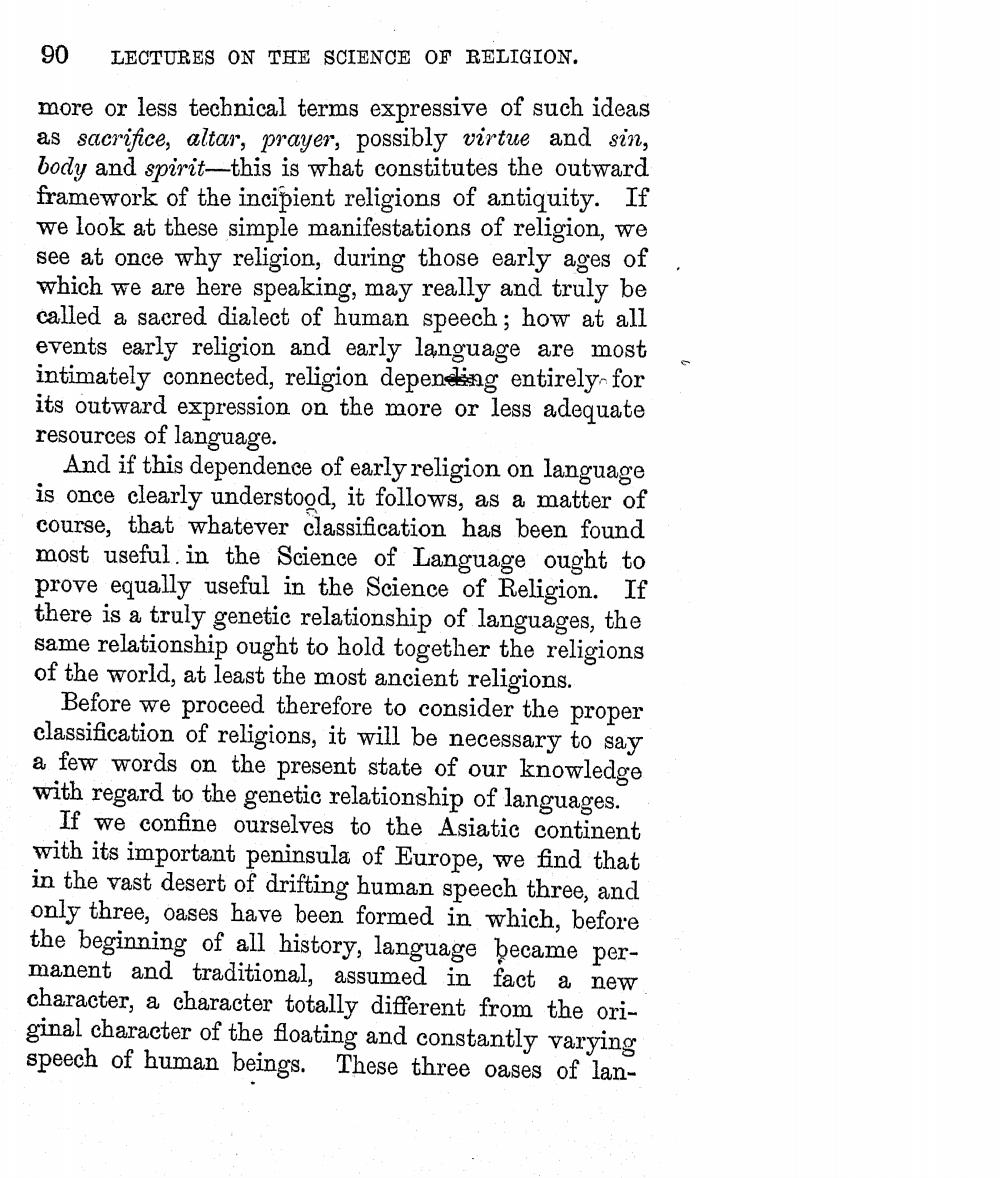________________
90
more or less technical terms expressive of such ideas as sacrifice, altar, prayer, possibly virtue and sin, body and spirit-this is what constitutes the outward framework of the incipient religions of antiquity. If we look at these simple manifestations of religion, we see at once why religion, during those early ages of which we are here speaking, may really and truly be called a sacred dialect of human speech; how at all events early religion and early language are most intimately connected, religion depending entirely for its outward expression on the more or less adequate resources of language.
And if this dependence of early religion on language is once clearly understood, it follows, as a matter of course, that whatever classification has been found most useful. in the Science of Language ought to prove equally useful in the Science of Religion. If there is a truly genetic relationship of languages, the same relationship ought to hold together the religions of the world, at least the most ancient religions.
LECTURES ON THE SCIENCE OF RELIGION.
Before we proceed therefore to consider the proper classification of religions, it will be necessary to say a few words on the present state of our knowledge with regard to the genetic relationship of languages.
If we confine ourselves to the Asiatic continent with its important peninsula of Europe, we find that in the vast desert of drifting human speech three, and only three, oases have been formed in which, before the beginning of all history, language became permanent and traditional, assumed in fact a new character, a character totally different from the original character of the floating and constantly varying speech of human beings. These three oases of lan
6




